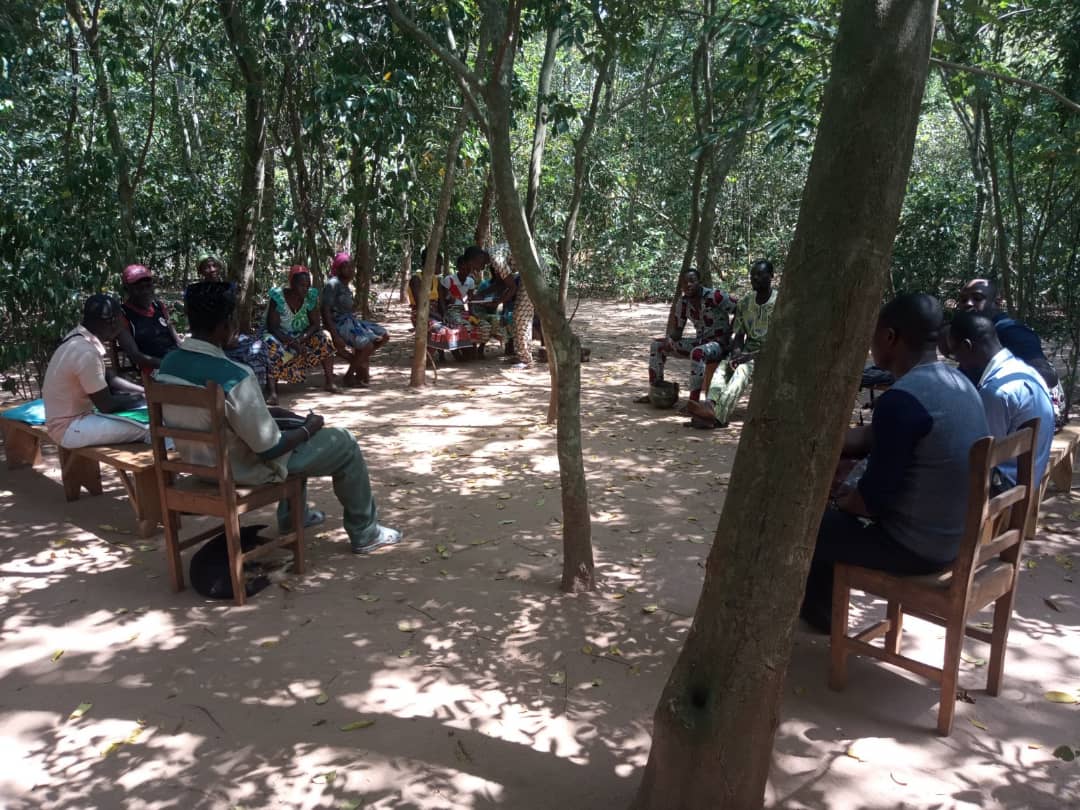Jardin Botanique Amakanmey de Houngbézanmey , Bénin
Description
The Botanic Garden of Houngbezanmey (known as Amakanmey in the Adja language) is an ICCA covering 2 hectares in the municipality of Djakotomey. The Houngbezanmey community who manage this ICCA are made up of 126 individuals across 25 households. The community have long protected this area based on management rules that have been defined by its members. It has an important spiritual role within the local community due to its rich diversity of medicinal plants, which are used for healing diseases. Dignitaries also regularly perform rituals and sacrifices in the garden in line with the traditions of the community.
History and Activities
The Botanic Garden was established in the early 2000s by the healers and traditional practitioners of the community. It was established on a plot of 2 hectares that was offered by a healer member of the community, called Fangbedji Nago. He was the grandson of the founder of the village ‘éffiohoué (which means royal house).
The goals of the ICCA have remained unchanged since it was founded, and are:
- to provide and develop sources of natural and traditional disease treatments
- to preserve the local community’s culture and tradition
- to maintain and enhance the biodiversity of the site
- to support sustainable livelihoods
- to develop tourism opportunities
Medicinal plants are used for the treatment of diseases, when authorised by the management committee. During the harvest season, the president of the local committee organises the collection of honey from the beehives in the Botanical Garden. The Botanical Garden also includes a meeting space for visitors.
Conservation
The Botanic Garden was legally recognised by a municipal decree in 2019. It was also proposed as a protected area in 2002 by the Ministry of Health, but the community do not yet have documentation of this.
The biodiversity of this site consists largely of medicinal plants, including (in the local adja language) éwatchi, guila, hlouihlouithi, acacia, Moringatchi, vouvoutchi, éhétchi, lokotchi gbého, calcédratchi, sésséhou, Nimtchi, kampêtchi, and kake. Animals include agoutis, reptiles, parrots, owls and turtledoves.

Governance and Management
The Botanic Garden belongs to the local community and is managed by a local management committee based on management rules that have been defined by the members of the community, and expressed in a written management plan.
While the Botanic Garden is fenced, it has faced some threats including plants being stolen. However, this threat is now reducing, thanks to NGOs, forestry agencies and the establishment of local management structures. Longer term threats include climate change and cultural change, as well as lack of legal recognition at the national level.
Next Steps
The local management committee has identified future needs as follows; capacity-building for managers on the use of medicinal plants, further development of the medicinal resources within the ICCA, communication with other ICCAs, and further legal recognition from the government.
This case study was originally published by UNEP-WCMC in February 2021. The content was provided by the custodians of this ICCA. The ICCA has been self-declared and has been through a peer-review process to verify its status. More details on this process can be found here. The contents of this website do not necessarily reflect the views or policies of UN Environment Programme or WCMC